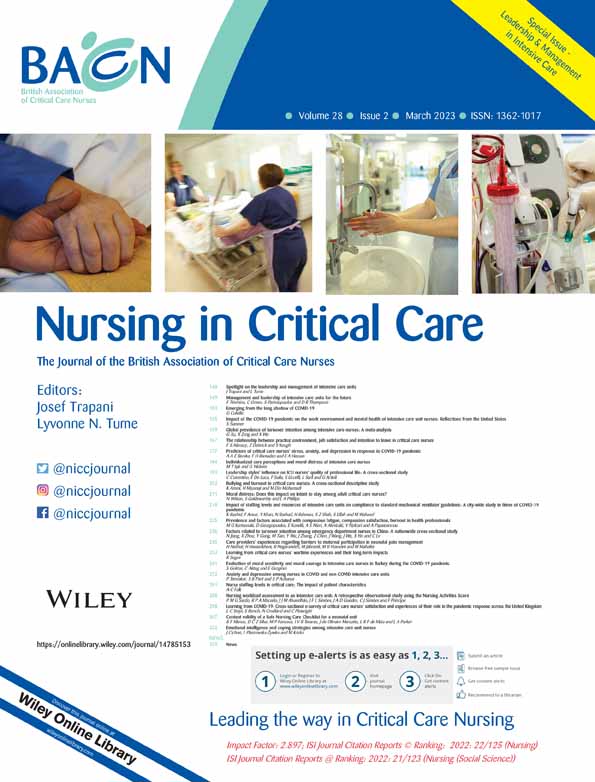Anxiety and depression among nurses in COVID and non-COVID intensive care units
Abstract
Background
Frontline nurses dealing with the coronavirus disease-2019 (COVID-19) pandemic face various mental health challenges ranging from excessive stress and anxiety to severe depression.
Aims
To study the comparative prevalence of anxiety and depression, and their contributing factors, between nurses working in intensive care units (ICU) with COVID-19 patients (COVID ICU) and nurses working in ICU with patients admitted for other reasons (non-COVID ICU).
Design
Quantitative comparative cross-sectional study.
Methods
All frontline nurses working in COVID and non-COVID ICUs at a tertiary care university hospital in Nepal were included. The data were collected using Google Forms. The groups were evaluated and compared in terms of various relevant variables with self-designed socio-demographic questionnaire, the validated Nepali version of the Hospital Anxiety and Depression Scale (HADS), and the General Health Questionnaire 12 (GHQ-12).
Results
The response rate was 100%. Of the 99 nurses who met the inclusion criteria, three were excluded. Out of the 96 nurses included, psychiatric caseness was present in 82 (85.4%). There was no statistically significant difference in the prevalence of psychiatric caseness, anxiety, and depression between the COVID ICU and non-COVID ICU nurses (caseness of 90.4% vs 79.5%, P = .134; anxiety of 36.5% vs 27.3%, P = .587; and depression of 21.2% vs 9.1%, P = .214, respectively). Among the factors that could potentially lead to psychiatric caseness, anxiety, and depression, statistically significant differences were observed only in relation to sleep disturbances, confidence in caring for patients with COVID-19 and intentions to discontinue current job, all being significantly higher in COVID ICU nurses.
Conclusion
Anxiety and depression are common in nurses working in both the COVID and non-COVID ICUs, although the difference is not statistically significant.
Relevance to clinical practice
Early assessment of anxiety and depression in nurses working in all ICUs and their active medical and behavioural interventions are important in protecting this vital work force dealing with the pandemic.
CONFLICT OF INTEREST
The authors do not have any conflicts of interest.




